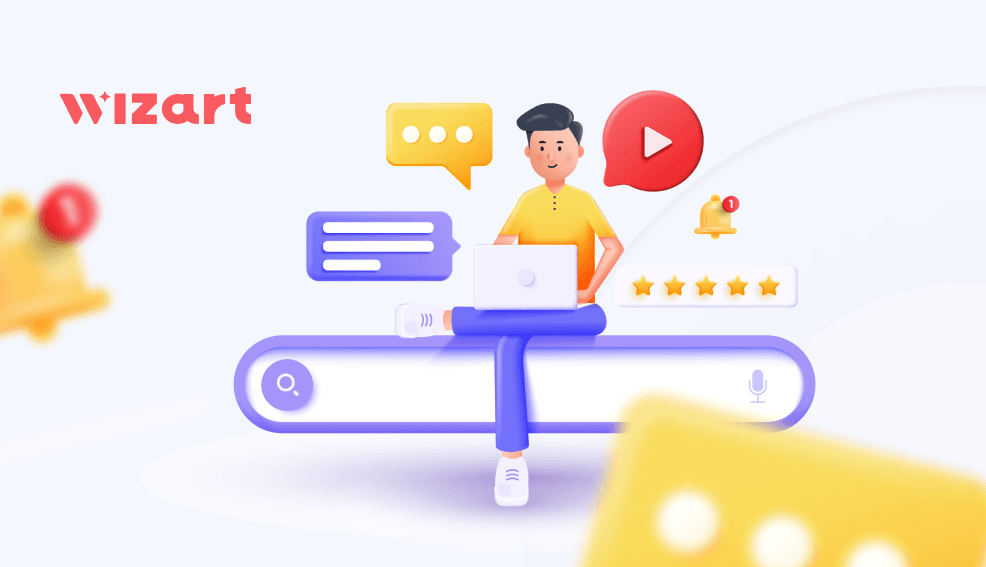Psychology of consumer behavior: Improving Marketing with the Exit, Voice, Loyalty Model

In today's highly competitive business environment, gaining a deep understanding of customer psychology is vital for achieving success. Numerous studies have shown that organizations that effectively utilize customer behavioral insights experience significant improvements, with sales growth increasing by 85 percent and gross margins rising by more than 25 percent.
One effective framework for analyzing customer behavior and decision-making is the Exit, Voice, Loyalty (EVL) model by Albert O. Hirschman.
In this article, we will explore the significance of consumer psychology and how the EVL model can be used in marketing strategies.
Summary of Hirschman's Exit, Voice, Loyalty model
The EVL model, also known as the Exit, Voice, Loyalty model, was introduced by Albert O. Hirschman in his seminal book "Exit, Voice, and Loyalty: Responses to Decline in Firms, Organizations, and States," published in 1970. Hirschman, a renowned economist, and social scientist, developed the model to explore customer behavior and decision-making in response to dissatisfaction.
Drawing from his background in economic theory and sociology, Hirschman sought to understand how individuals respond when they encounter problems or dissatisfaction with a product, service, or organization. He proposed that customers have three primary options when faced with such situations: Exit, Voice, and Loyalty.
The Exit option refers to customers choosing to exit or discontinue their relationship with a brand or organization. The Voice option emphasizes customers expressing their dissatisfaction and providing feedback. And the Loyalty option involves customers choosing to remain committed and loyal to a brand despite encountering problems.
Since its inception, the EVL model has been widely applied in various fields, including marketing, economics, and organizational behavior. It has provided a conceptual framework for understanding and analyzing customer behavior, decision-making, and the dynamics between customers and organizations.
By analyzing customer reactions through the EVL model, businesses can proactively address concerns and optimize their strategies for better customer satisfaction and long-term growth.
Exit: the power of leaving
The Exit option involves customers choosing to discontinue their relationship with a brand. Not only do they stop purchasing specific products, but they can also share their poor experiences with friends and family, impacting brand reputation. In a 2013 study, software company Zendesk found that 95 percent of users were likely to share bad experiences, while 87 percent would share good experiences.
Poor product quality, high prices, or negative experiences are common reasons for customers opting for Exit. The consequences of customer Exit are significant, including revenue loss, reputation damage, and negative word-of-mouth. Furthermore, silent exits do not provide valuable insights for businesses to improve.
Voice: speaking up for change
The Voice option emphasizes customers expressing dissatisfaction and providing feedback. Encouraging customers to voice their concerns through channels like customer support, reviews, and online discussions is vital. It is the best strategy as it provides valuable information for businesses to improve. Actively listening to customer feedback and utilizing it as an opportunity for improvement enhances customer retention, reputation, and overall brand image.
To effectively work with customer reviews and feedback, you can:
- Create platforms for feedback. Establish multiple channels where customers can easily provide feedback, such as online review platforms, feedback forms on the website, or dedicated customer support lines. Make it convenient for customers to share their opinions.
- Encourage honest feedback. Encourage customers to provide honest and constructive feedback by assuring them that their opinions are valued and will be taken into consideration. Emphasize that their feedback plays a crucial role in improving products, services, and overall customer experience.
- Promptly respond to reviews. Actively monitor and respond to customer reviews, whether they are positive or negative. Acknowledge customers' concerns, express gratitude for their feedback, and provide timely and personalized responses. This demonstrates that the business is attentive and committed to addressing customer needs.
- Address concerns and take action. Use customer reviews as a valuable source of insights to identify areas of improvement. Analyze recurring themes or issues mentioned in the reviews and take appropriate action to rectify them. Communicate the steps being taken to address concerns, showing customers that their feedback has a direct impact.
- Learn from positive reviews too. Don't solely focus on negative feedback. Positive reviews can provide valuable information about what customers appreciate and find beneficial. Identify patterns in positive feedback to understand the strengths of your business and leverage them to enhance customer experience further.
Loyalty: staying committed
Despite dissatisfaction, some customers choose to remain loyal to a brand. Loyalty is fostered through positive past experiences, emotional connections, and perceived value. Businesses must prioritize customer loyalty and develop strategies such as exceptional customer service, personalized experiences, and loyalty programs. Retaining and nurturing loyal customers proves more profitable than constantly attracting new customers. The probability of selling to an existing customer is 60-70% compared to only 5-20% for a new customer. However, you must also pay attention to the fact that loyal customers may not always provide clear feedback, requiring extra effort to encourage them to point out weaknesses and provide honest input.
Limitations of the EVL model in business
To effectively utilize the EVL model, businesses must actively listen to customer feedback, measure customer satisfaction, and promptly address issues. Implementing customer-centric approaches, such as personalized communication, efficient customer support, and continuous improvement, can enhance customer relationships.
However, it is important to recognize that implementing the EVL model may face challenges and limitations, particularly in diverse business contexts. Some limitations include:
- Subjectivity in measuring customer loyalty. Assessing customer loyalty is subjective and relies on customer perceptions and behaviors, making it challenging to accurately measure and quantify.
- Varying customer preferences and motivations. Customers have diverse preferences, motivations, and decision-making processes. The EVL model provides a general framework but may not fully capture the complexities of individual customer behavior and the unique factors that influence their choices.
- Limited insight into customer motivations. The EVL model focuses on customer responses to dissatisfaction but may not provide a comprehensive understanding of the underlying motivations driving those responses. Additional research methods and tools may be necessary to gain deeper insights into customer motivation.
- Potential biases in customer feedback. Customer feedback, particularly in the form of reviews or surveys, may be subject to biases and limitations. Some customers may be more inclined to provide feedback, leading to potential sampling biases that can impact the accuracy and representativeness of the data.
Understanding consumer psychology is essential for marketers, business owners, and C-level managers in the home improvement industry. By embracing the Exit, Voice, and Loyalty model, you can gain insights into customer behavior, enhance customer satisfaction, and improve marketing KPIs. Prioritizing customer-centric strategies and fostering loyalty will undoubtedly lead to long-term success in this competitive market. Remember, happy customers are the driving force behind a thriving business.
